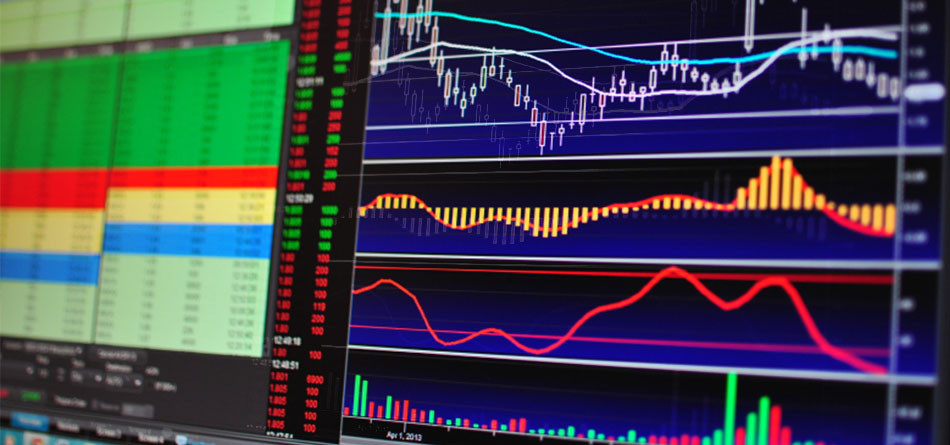
Asif Razaq, who oversees Macro Algo Execution at BNP Paribas in London, talks to Markets Media Group Senior Writer Julie Ros about AI and the bank’s fifth generation complex algo suite, as well as its plans to extend its algo suite into futures markets.
Tell me a bit about your background and current role at BNP Paribas?
My career background has always been as a quant technologist, working predominantly in the FX space. I graduated with a Math and Computing degree and did my Masters in Artificial Intelligence (AI). Back when I graduated, there were very few applications of AI outside of the military defense arena, but of course that has changed over the years and I’m now fortunate enough to be able to apply some of that academia into the world of financial markets.
When I joined BNP Paribas’s FX e-trading desk 13 years ago, it was all about automation – what can we automate and how much? The FX spot desk was predominantly a voice-based desk. Over the years, we’ve embraced technology and automated a lot of the trading functions. It began with our spot traders needing to have smart algorithms designed to help them do their jobs more efficiently. Then, with the rise of ECNs, we started to see issues with liquidity fragmentation and our traders needed more effective tools to manage execution. This is when I came on to the scene; to build algorithms and help them effectively hedge and manage their risk when clients gave them flow.
This reflects the evolution of how technology is changing the way the bank operates and how it’s serving our clients, but also how our clients are evolving and embracing technology in their day-to-day execution needs.
How was that received by the traders at the time?
It was very well received – so much so that we decided to repackage the technology and offer it directly to clients, which is when BNP Paribas’s algo suite was born. Our approach – building algos specifically for the FX market – meant that our algos had much better performance and results than adapting equity-based algos for FX, which was the route a lot of our peers were taking. This was also the first time I started applying some basic AI concepts into the algorithms. When we launched our algorithms, we employed adaptive technology, meaning that these algorithms could read markets in real time. As they see the microstructure of the market change, these algorithms will shapeshift to fit those markets. Hence the name of our flagship algo – Chameleon – because as the market environment changes, the algo blends in and changes its color to fit that market. It became a key success story for us in the algo execution space.
What types of clients are using algos?
At the beginning it was mainly real money and corporates, but now we have clients from all categories – banks, macro and systematic hedge funds, corporates, pension funds, asset managers – they’re all actively using algos in their day-to-day trading. It’s become a very mature product.
Besides the algo suite, what are some of the other investments BNP Paribas has made?
In addition to the investment in execution algorithms, we also made significant investment in our single-dealer platform, Cortex. What our clients liked about our platform was that we weren’t just using pricing as a differentiator, we were bringing them new tools, including things like pre-trade analytics where they could evaluate market liquidity and simulate executions before they even put on a trade.
More recently, we launched our digital trading assistant, AliX, which was based on the concept of Alexa and Siri for financial markets. The journey started with this concept of deploying interactive technology where clients can ask AliX questions and AliX would also push content to users, such as research suggestions.
That kind of service lent itself very well to the algo space and led to the launch of our fourth generation algo platform, Interactive Algos. This concept allows the algo to develop a ‘personality’ and be able to give live commentary back to the user during execution. If the algo slows down because it sees liquidity drying up, AliX will communicate that it is slowing down the execution due to markets being quiet and/or liquidity is scarce. The interactivity also allows the client to ask questions such as, how long is this trade going to run, what are the liquidity conditions and if they are outperforming the benchmarks. Thus, clients can really interact and build this concept of Siri and Alexa into algo trading, which provided a big comfort factor to a large community of clients that were sitting on the fence.
Have you launched any new services this year?
We recently launched a new service called Insight Live, which provides a visual representation of what the algo sees in the market in real time. The graphical dashboard allows clients to see liquidity in real time. They can see how much volume is out there through aggregated order books. They can also see real-time fills and live benchmarks. These fourth generation algos – Insight Live packaged with AliX – has enabled BNP Paribas to raise the bar.
Have you applied the same automation for G10 spot FX to the EM and NDF desks?
Yes, but you still need to have some voice trader presence for supporting those markets, which aren’t electronically mature. However, BNP Paribas now offers algo capability across all major EM and NDF currencies. Our vision is to replicate this automation across all our FX products.
What we’re doing now is deploying resources from the e-trading spot team and planting them in the swaps business. Over the last two years we have been developing our e-trading swaps desk, which has gone from strength-to-strength. It’s been a huge success story in taking that technology set that we’ve developed in the spot market and using it in swaps to basically grow our relevance and our market share in that space. Now we’re replanting those same resources into the FX options space. So clearly, we have a good recipe that seems to be working and we’re going be replicating that across the different business lines within FX.
How can clients access AliX and insight Live?
Both AliX and our Insight Live dashboard are exclusive to Cortex, but some clients – especially those in the asset manager/real money space – have best execution requirements that mean they must trade on multi-dealer platforms. Therefore, we made Cortex available as an app on the Bloomberg terminal and fully integrated with all the multi-dealer platforms. Now, wherever a client chooses to execute an order, or when they start an algo on a particular platform, the Cortex app will pop up on the terminal and give them a dashboard view into that order. The app allows the client to manage the order with the benefit of all the value-added services that we built in, such as AliX and Insight Live.
This year, we’ve taken it one level higher and launched our fifth generation algo suite. All the algos we’ve been talking about in terms of third and fourth gen algos were all about executing one currency pair, one large order, at any given point in time. But we often miss that there is a complicated workflow that surrounds the execution piece and we started to look at whether we could automate anything more than just the execution.
Our latest fifth gen algo – Rex – addresses the chore of managing convoluted crosses in a basket of trades. The idea behind Rex is that we gave clients a mechanism to group and upload an entire basket of orders into Rex. Once the algo receives it, it then starts to digest the orders by de-crossing them, provide netting, and looks to see if there is correlation in the underlying currencies. For example, if a client was to buy in Aussie/Yen and sell in Aussie/Mex, the client can now net their Aussie position down and Rex works out what the final exposure is that it needs to execute. The real power of Rex is that it is then able to look at the correlation between these currency pairs and work out how best to execute that entire basket. Therefore, if there are two currency pairs that are positively correlated, Rex would work out an execution schedule such that it would execute one before the other, or if they were opposite correlation, it would execute them in parallel. It has the intelligence of knowing the relationship between the orders, but also has access to all the pre-trade analytics that we developed for it to run simulations and see how algorithms perform to essentially come up with a project plan that it gives back to the client to show how it’s going to execute the basket.
You were recently given responsibility for cross-asset execution. Are you looking to add this functionality for other asset classes?
Over the last two years, I’ve been busy taking our core algo strategies like Chameleon, Iguana, and Viper and rebuilding those to trade against different asset classes. We’re excited to be launching our new algo suite for futures early next year, which will extend our algos into futures for the first time. It’s quite an important development because we want to give clients familiarity with our algorithms regardless of what asset classes they’re trading. Whether they’re trading FX OTC or whether they’re trading a bond future, we have a Chameleon that does both.
So where do you go next?
I’m now looking at the cash bond market, where we’re going to build the same suite of strategies and services for US Treasuries.
Where do you look for inspiration?
It’s all about innovation and coming up with cool technology and ideas to bring to financial markets. I get a lot of ideas from looking at what Apple and Google are doing and bringing that technology to financial markets. We are now actively working with ChatGPT and Llama and building that into AliX, which will be using AI-based technology to provide clients with curated content.
It’s exciting times at BNP Paribas, with lots of new innovations to come next year.





